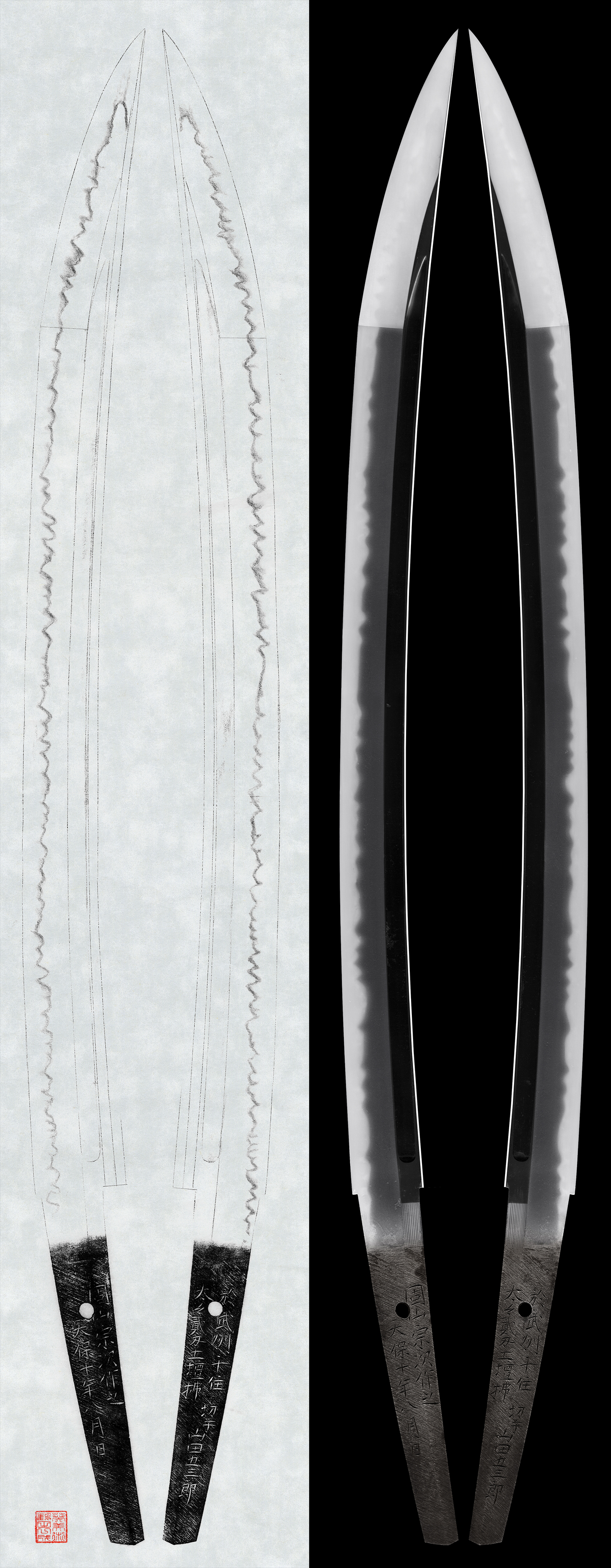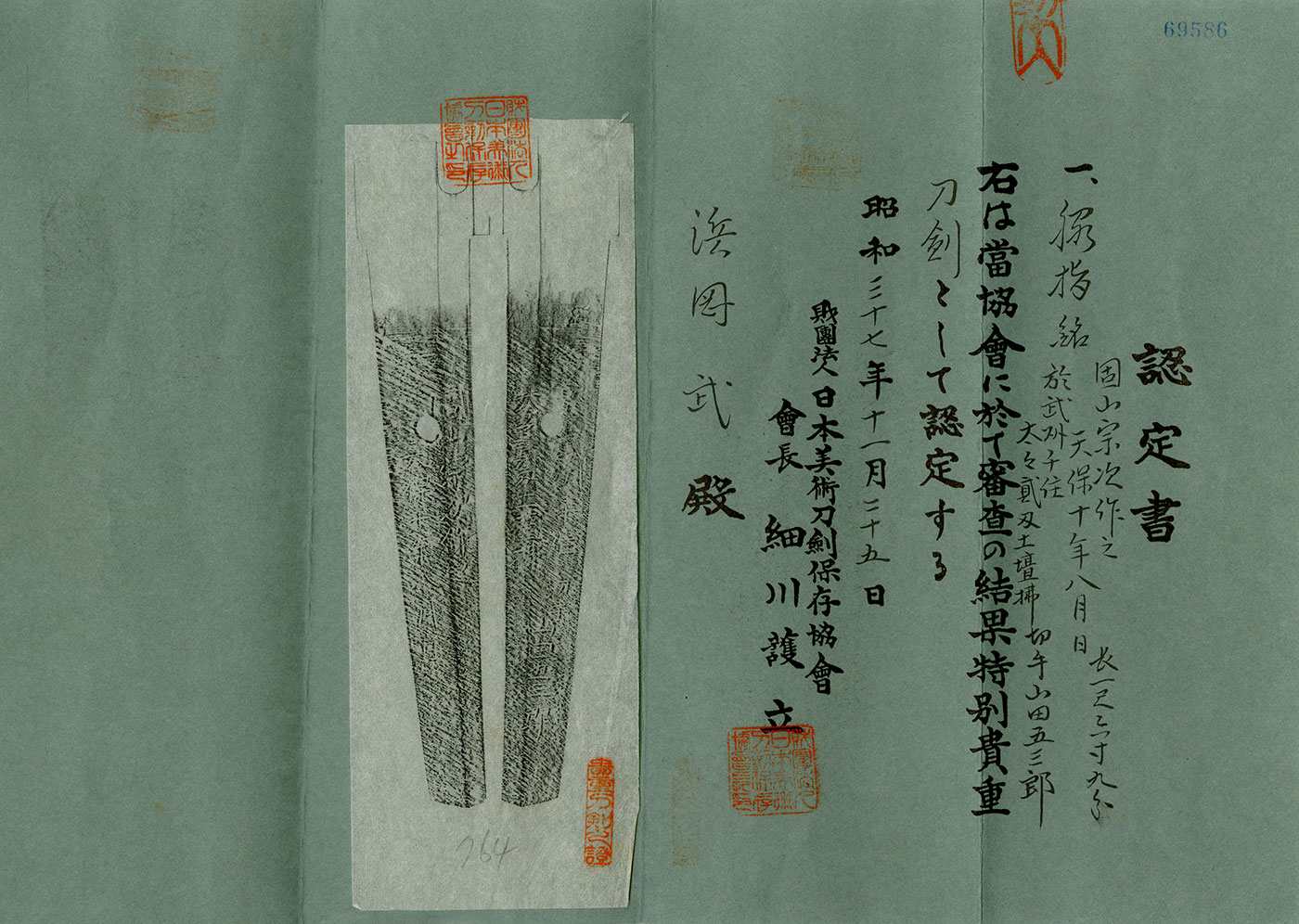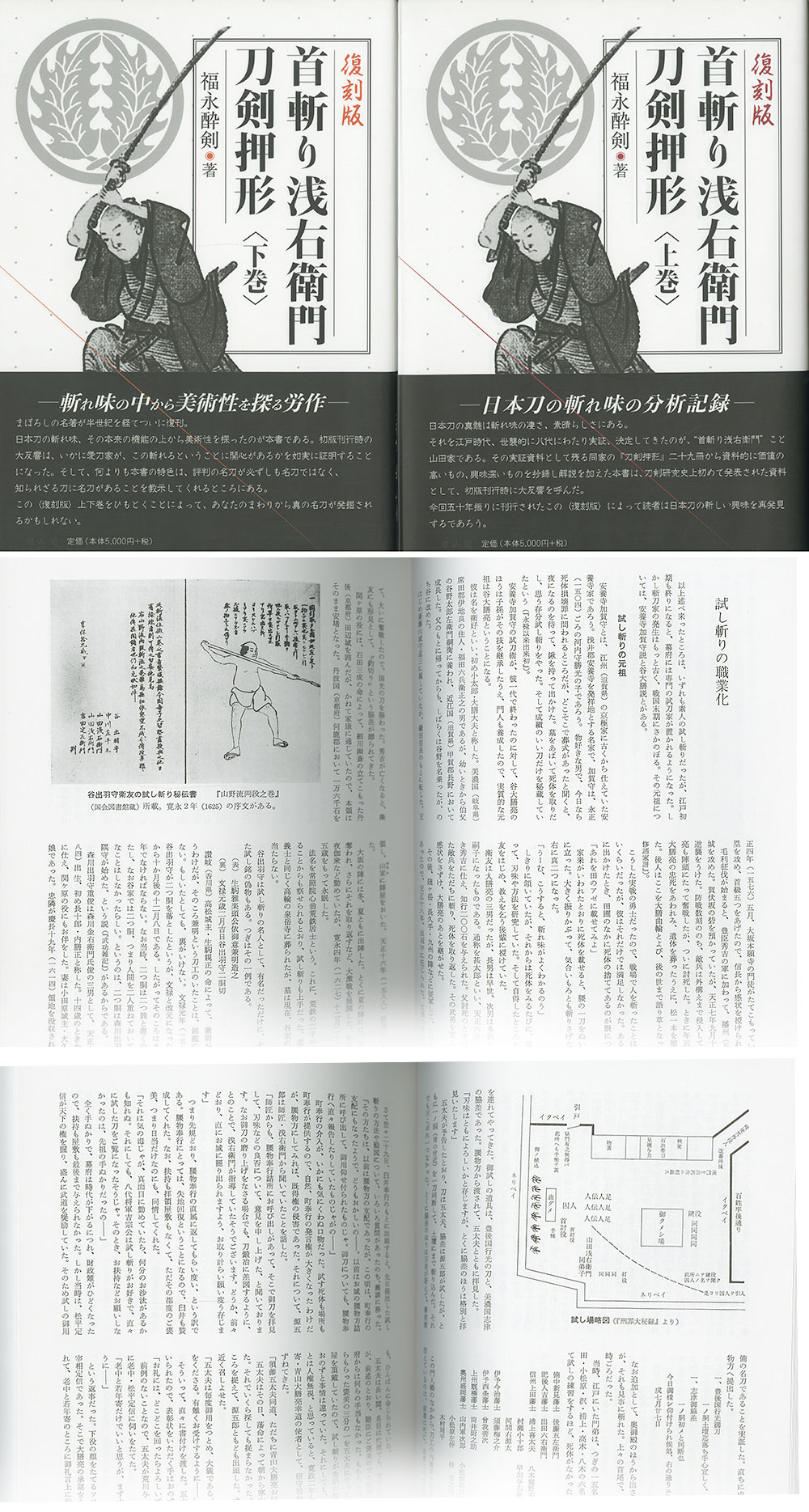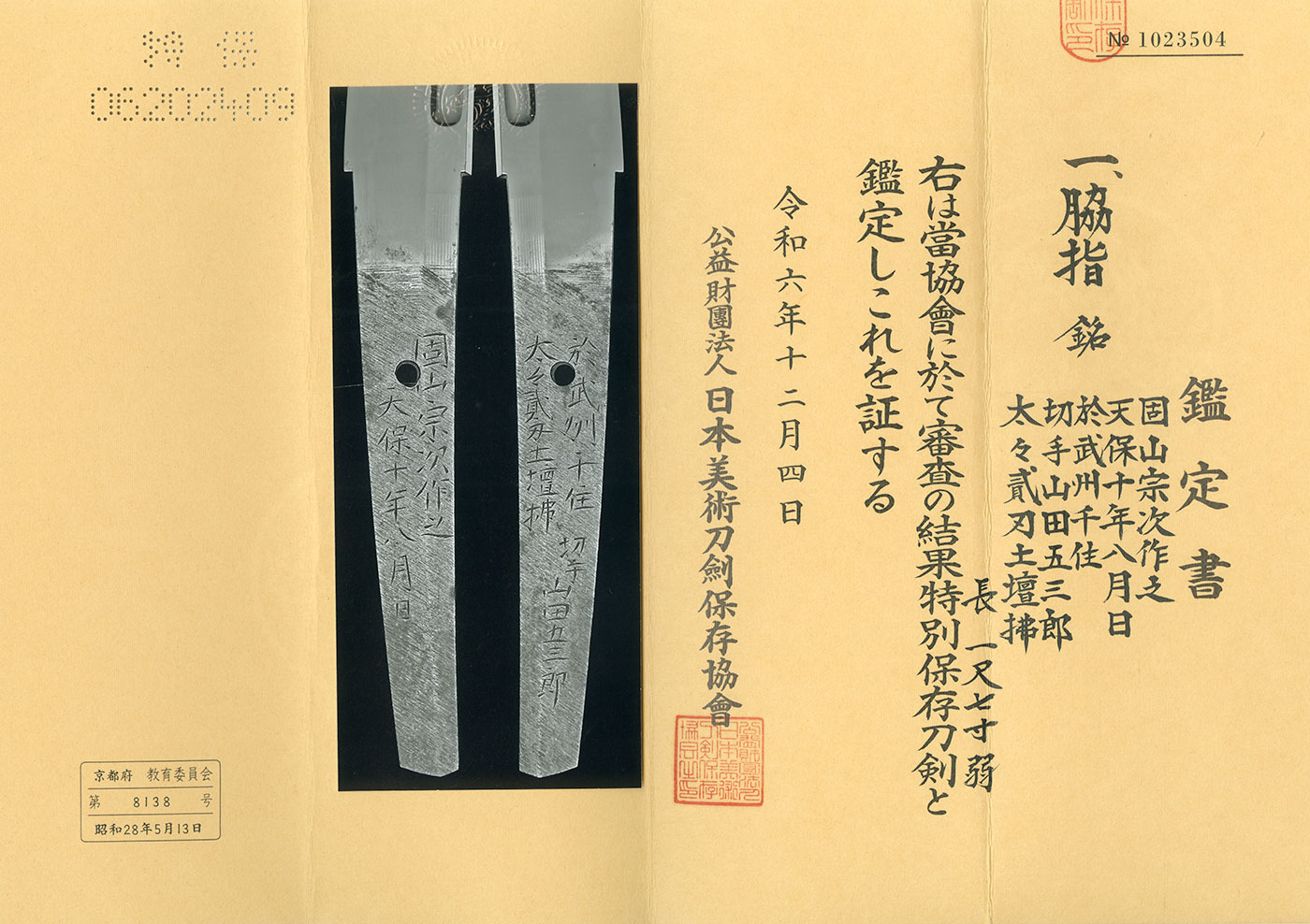Description
Wakizashi in Shirasaya (NBTHK Tokubetsu Hozon Token)(NBTHK Tokubetsu Kicho Token)(Book: “Kubikiri Asaemon Token Oshigata” by Fukunaga Suiken (2 Volumes Set))
Signature: Koyama Munetsugu Saku
Tenpo 10 Nen 8 Gatsu Hi (August 1839)
Oite Bushu Senju Tata 2 Ha Dotan barai
Kitte Yamada Gozaburo
固山宗次作
天保十年八月日
於武州大々貳刃土壇払
切手山田五三郎
Explanetion: This Wakizashi was made by Koyama Munetsugu
in August, 10th year of Tenpo (1839)
At Bushu, Dai Dai Niha Dotan Barai
Tested by Yamada Gozaburo
We divide 4 sections for each sword as Saijyo Saku, Jyojyo Saku, Jyo Saku, and Regular Saku.
This piece is ranked as Jyojyo Saku.
Habaki: Wooden habaki
Blade Length: 1 shaku 6 sun 9 bu (51.2 cm / 20.16 in)
Curvature: 4 bu 2 rin (1.27 cm / 0.50 in)
Mekugi Hole: 1
Width at Base (Motohaba): 3.30 cm (1.30 in)
Width at Tip (Sakihaba): 2.99 cm (1.18 in)
Thickness (Kasane): 0.78 cm (0.31 in)
Sword Weight: 595 g
Era: Tenpo 10 (1839), Edo period
Shape:A robust wakizashi with a wide blade and thick kasane.
A long kissaki, deeply carved bohi on both sides, creating a powerful and grand appearance.
Jigane:Fine, well-forged steel with a smooth, muji-style surface.
Hamon:A gunome-midare pattern formed mainly by nioi, with a similar pattern in the boshi, which returns in a small round shape.
Features:Koyama Munetsugu was born in Shirakawa, Mutsu, as the younger brother of Kozan Munenori.
He was known as Sohei and later became a retained swordsmith of the Shirakawa-Matsudaira clan.
Following his feudal lord, he moved to Kuwana and later to Edo in Tenpo 2 (1831), where he continued forging swords.
He was already well-known at the time, and many samurai commissioned swords from him.
Munetsugu’s works are known for their exceptional quality, showcasing his high level of craftsmanship.
He studied extensively under Yamada Asaemon, a well-known sword tester, to improve the cutting ability of his swords.
As a result, many of his blades bear test-cut inscriptions from Yamada Asaemon’s lineage.
This piece features a test-cut inscription:
“Kozan Munetsugu Saku, August, 10th year of Tenpo, at Bushu Senju, Dai Dai Niha Dotan Barai, Tested by Yamada Gozaburo.”
Aoi Art’s Comment:A powerful wakizashi with a long kissaki and a bold appearance.
By the Tenpo era, gold inlay inscriptions became rarer, and direct cutting test inscriptions became more common.
This sword was likely made with the intent of having a cutting test inscription from the beginning.
NBTHK Tokubetsu Hozon Token
NBTHK Tokubetsu Kicho Token
Book: “Kubikiri Asaemon Token Oshigata” by Fukunaga Suiken (2 Volumes Set)
Aoi Art Estimation Paper
Whole Oshigata









 日本語
日本語






